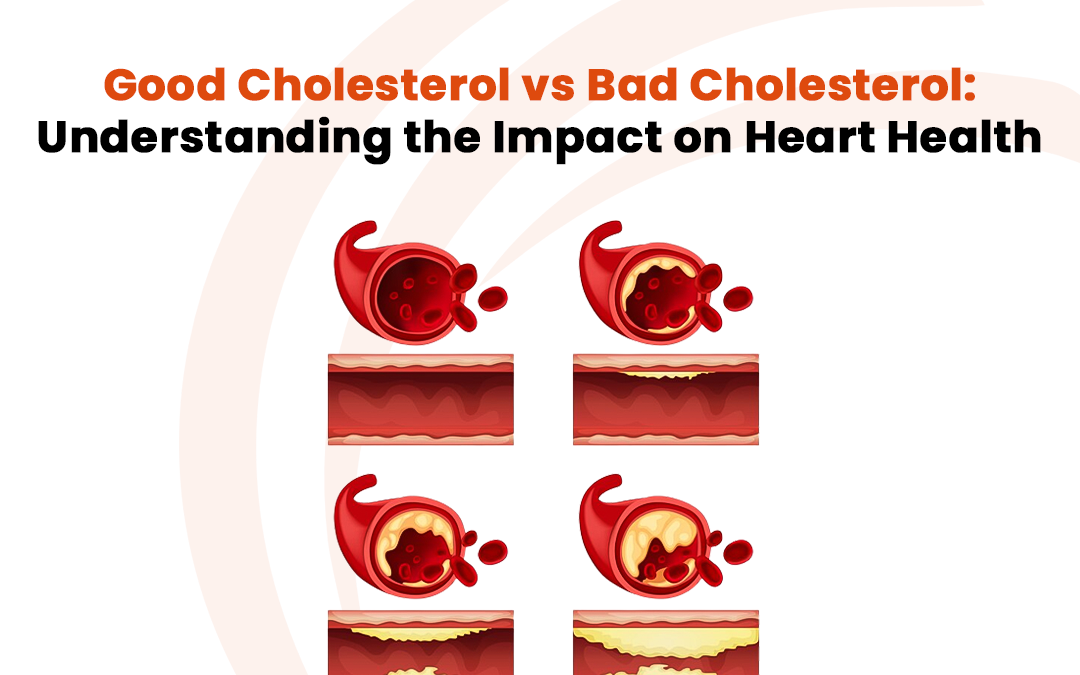Welcome to our comprehensive guide on the essential topic of Good Cholesterol vs Bad Cholesterol. As seasoned experts in the field of health and wellness, we are excited to delve into the intricate details of cholesterol and its impact on our well-being. Understanding the crucial distinction between good and bad cholesterol is vital for maintaining a healthy heart and overall health.
What is Cholesterol?
Before we dive into the comparison, let’s demystify cholesterol. Cholesterol is a fatty substance present in our blood, playing a pivotal role in various bodily functions. Essential for cell membrane formation, vitamin D synthesis, and hormone production, cholesterol is transported in the bloodstream by lipoproteins, categorized into two main types: low-density lipoprotein (LDL) and high-density lipoprotein (HDL).
Low-Density Lipoprotein (LDL) – The “Bad” Cholesterol
LDL cholesterol, often referred to as “bad” cholesterol, can build up on artery walls, forming plaques that narrow and block blood flow. This raises the risk of cardiovascular diseases, such as heart attacks and strokes. Maintaining low LDL cholesterol levels is crucial for a healthy heart.
High-Density Lipoprotein (HDL) – The “Good” Cholesterol
On the other hand, HDL cholesterol is known as “good” cholesterol due to its protective effects on the heart. HDL carries cholesterol away from arteries back to the liver for disposal or recycling, reducing plaque buildup and lowering the risk of heart disease.
Cholesterol Ratios – Decoding the Numbers
Understanding cholesterol levels goes beyond knowing absolute numbers. The cholesterol ratio, calculated by dividing total cholesterol by HDL cholesterol, is an essential indicator of heart health. A lower ratio indicates a lower risk of heart disease.
The Impact of Diet and Lifestyle
Diet and lifestyle significantly influence cholesterol levels. Consuming a diet high in saturated and trans fats can increase LDL cholesterol, while healthy fats in nuts and avocados can boost HDL cholesterol. Regular exercise, maintaining a healthy weight, and not smoking are vital lifestyle factors that positively influence cholesterol levels.
Managing Cholesterol Levels
Lifestyle changes may not always be sufficient for individuals with high LDL cholesterol. Medication, such as statins, may be prescribed to manage cholesterol levels effectively. Statins lower LDL cholesterol levels and reduce the risk of cardiovascular events.
Conclusion
Understanding the distinction between good cholesterol (HDL) and bad cholesterol (LDL) is essential for maintaining heart health. While LDL cholesterol can pose risks to cardiovascular health, HDL cholesterol acts as a protector. Striving for a balanced cholesterol ratio and adopting a heart-healthy lifestyle are key components of maintaining optimal cholesterol levels.
As health advocates, we encourage everyone to prioritize their heart health by making informed choices and staying proactive about cholesterol management. Sign up to myCare+ to create a personalized plan that suits your unique health needs.

 We use cookies to ensure that we give you the best experience on our website. If you continue to use this site we will assume that you are happy with it.
We use cookies to ensure that we give you the best experience on our website. If you continue to use this site we will assume that you are happy with it.